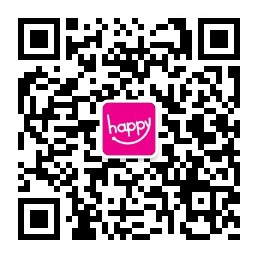Usb通信之USB Host
2021-06-23T08:43:17--------------------------------------------------------------------------------------------------------
零 USB背景知识
USB是一种数据通信方式,也是一种数据总线,而且是最复杂的总线之一。
硬件上,它是用插头连接。一边是公头(plug),一边是母头(receptacle)。例如,PC上的插座就是母头,USB设备使用公头与PC连接。
目前USB硬件接口分三种,普通PC上使用的叫Type;原来诺基亚功能机时代的接口为Mini USB;目前Android手机使用的Micro USB。
Host
USB是由Host端控制整个总线的数据传输的。单个USB总线上,只能有一个Host。
OTG
On The Go,这是在USB2.0引入的一种mode,提出了一个新的概念叫主机协商协议(Host Negotiation Protocol),允许两个设备间商量谁去当Host。
预了解更多USB知识,请参考USB官网以及下面这篇文章:
http://www.crifan.com/files/doc/docbook/usb_basic/release/html/usb_basic.html
一、Android中的USB
Android对Usb的支持是从3.1开始的,显然是加强Android平板的对外扩展能力。而对Usb使用更多的,是Android在工业中的使用。Android工业板子一般都会提供多个U口和多个串口,它们是连接外设的手段与桥梁。下面就来介绍一下Android Usb使用模式之一的USB Host。
android.hardware.usb包下提供了USB开发的相关类。
我们需要了解UsbManager、UsbDevice、UsbInterface、UsbEndpoint、UsbDeviceConnection、UsbRequest、UsbConstants。
1、UsbManager:获得Usb的状态,与连接的Usb设备通信。
2、UsbDevice:Usb设备的抽象,它包含一个或多个UsbInterface,而每个UsbInterface包含多个UsbEndpoint。Host与其通信,先打开UsbDeviceConnection,使用UsbRequest在一个端点(endpoint)发送和接收数据。
3、UsbInterface:定义了设备的功能集,一个UsbDevice包含多个UsbInterface,每个Interface都是独立的。
4、UsbEndpoint:endpoint是interface的通信通道。
5、UsbDeviceConnection:host与device建立的连接,并在endpoint传输数据。
6、UsbRequest:usb 请求包。可以在UsbDeviceConnection上异步传输数据。注意是只在异步通信时才会用到它。
7、UsbConstants:usb常量的定义,对应linux/usb/ch9.h
二、USB插入事件
Usb的插入和拔出是以系统广播的形式发送的,只要我们注册这个广播即可。
@Override
protected void onResume() {
super.onResume();
IntentFilter usbFilter = new IntentFilter();
usbFilter.addAction(UsbManager.ACTION_USB_DEVICE_ATTACHED);
usbFilter.addAction(UsbManager.ACTION_USB_DEVICE_DETACHED);
registerReceiver(mUsbReceiver, usbFilter);
}
@Override
protected void onPause() {
super.onPause();
unregisterReceiver(mUsbReceiver);
}
private final BroadcastReceiver mUsbReceiver = new BroadcastReceiver() {
public void onReceive(Context context, Intent intent) {
String action = intent.getAction();
tvInfo.append("BroadcastReceiver in\n");
if(UsbManager.ACTION_USB_DEVICE_ATTACHED.equals(action)) {
tvInfo.append("ACTION_USB_DEVICE_ATTACHED\n");
} else if(UsbManager.ACTION_USB_DEVICE_DETACHED.equals(action)) {
tvInfo.append("ACTION_USB_DEVICE_DETACHED\n");
}
}
};
三、Usb插入时启动程序
有些应用场景是,Usb插入后启动特定程序处理特定问题。
我们的做法就是在Manifest中某个Activity加入Usb插入的action。
<intent-filter>
<action android:name="android.hardware.usb.action.USB_DEVICE_ATTACHED"/>
</intent-filter>
<meta-data android:name="android.hardware.usb.action.USB_DEVICE_ATTACHED"
android:resource="@xml/usbfilter" />
在usbfilter中加入厂商id和产品id的过滤,如下:
<?xml version="1.0" encoding="utf-8"?>
<resources>
<usb-device vendor-id="1234" product-id="5678" />
</resources>
结果就是,当此型号设备通过Usb连接到系统时,对应的Activity就会启动。
四、UsbManager的初始化
mUsbManager = (UsbManager)getSystemService(Context.USB_SERVICE);
1
五、列出Usb设备
HashMap<String,UsbDevice> deviceHashMap = mUsbManager.getDeviceList();
Iterator<UsbDevice> iterator = deviceHashMap.values().iterator();
while (iterator.hasNext()) {
UsbDevice device = iterator.next();
tvInfo.append("\ndevice name: "+device.getDeviceName()+"\ndevice product name:"
+device.getProductName()+"\nvendor id:"+device.getVendorId()+
"\ndevice serial: "+device.getSerialNumber());
}
六、USB使用权限
安卓系统对USB口的使用需要得到相应的权限,而这个权限要用户亲自给才行。
首先我们会确认一下上一节中的device是否已经获得权限,如果没有就要主动申请权限:
//先判断是否为自己的设备
//注意:支持十进制和十六进制
//比如:device.getProductId() == 0x04D2
if(device.getProductId() == 1234 && device.getVendorId() == 5678) {
if(mUsbManager.hasPermission(device)) {
//do your work
} else {
mUsbManager.requestPermission(device,mPermissionIntent);
}
}
我们仍然使用广播来获得权限赋予情况。
public static final String ACTION_DEVICE_PERMISSION = "com.linc.USB_PERMISSION";
1
注册广播
mPermissionIntent = PendingIntent.getBroadcast(this,0,new Intent(ACTION_DEVICE_PERMISSION),0);
IntentFilter permissionFilter = new IntentFilter(ACTION_DEVICE_PERMISSION);
registerReceiver(mUsbReceiver,permissionFilter);
1
2
3
接收器的代码:
private final BroadcastReceiver mUsbReceiver = new BroadcastReceiver() {
public void onReceive(Context context, Intent intent) {
String action = intent.getAction();
tvInfo.append("BroadcastReceiver in\n");
if (ACTION_DEVICE_PERMISSION.equals(action)) {
synchronized (this) {
UsbDevice device = intent.getParcelableExtra(UsbManager.EXTRA_DEVICE);
if (intent.getBooleanExtra(UsbManager.EXTRA_PERMISSION_GRANTED, false)) {
if (device != null) {
tvInfo.append("usb EXTRA_PERMISSION_GRANTED");
}
} else {
tvInfo.append("usb EXTRA_PERMISSION_GRANTED null!!!");
}
}
}
}
};
七、通信
UsbDevice有了权限,下面就可以进行通信了。
这里要用到:UsbInterface、UsbEndpoint(一进一出两个endpoint,双向通信)、UsbDeviceConnection。
注意:通信的过程不能在UI线程中进行。
得到授权后,将做一些通信前的准备工作,如下:
private void initCommunication(UsbDevice device) {
tvInfo.append("initCommunication in\n");
if(1234 == device.getVendorId() && 5678 == device.getProductId()) {
tvInfo.append("initCommunication in right device\n");
int interfaceCount = device.getInterfaceCount();
for (int interfaceIndex = 0; interfaceIndex < interfaceCount; interfaceIndex++) {
UsbInterface usbInterface = device.getInterface(interfaceIndex);
if ((UsbConstants.USB_CLASS_CDC_DATA != usbInterface.getInterfaceClass())
&& (UsbConstants.USB_CLASS_COMM != usbInterface.getInterfaceClass())) {
continue;
}
for (int i = 0; i < usbInterface.getEndpointCount(); i++) {
UsbEndpoint ep = usbInterface.getEndpoint(i);
if (ep.getType() == UsbConstants.USB_ENDPOINT_XFER_BULK) {
if (ep.getDirection() == UsbConstants.USB_DIR_OUT) {
mUsbEndpointIn = ep;
} else {
mUsbEndpointOut = ep;
}
}
}
if ((null == mUsbEndpointIn) || (null == mUsbEndpointOut)) {
tvInfo.append("endpoint is null\n");
mUsbEndpointIn = null;
mUsbEndpointOut = null;
mUsbInterface = null;
} else {
tvInfo.append("\nendpoint out: " + mUsbEndpointOut + ",endpoint in: " +
mUsbEndpointIn.getAddress()+"\n");
mUsbInterface = usbInterface;
mUsbDeviceConnection = mUsbManager.openDevice(device);
break;
}
}
}
}
发送数据如下:
result = mUsbDeviceConnection.bulkTransfer(mUsbEndpointOut, mData, (int)buffSize, 1500);//需要在另一个线程中进行
1
八、其他
作为一个普通的开发者,如果没有USB设备,那么调试程序是个问题。
可以使用AdbTest程序用OTG线连接两个手机或平板试试。
有USB设备的同事,会根据设备的通信协议规则去编码。这里面要用到byte与其他类型转换,以及十六进制的问题。
具体问题具体分析吧。这篇文章磕磕绊绊,就先到这里了。
参考:
1、endpoint的介绍:http://blog.chinaunix.net/uid-25314474-id-3040231.html
————————————————
作者:全速前行
链接:https://blog.csdn.net/lincyang/article/details/50739342
公众号
接口原型 - IT教程,计算机教程,API相关DEMO
